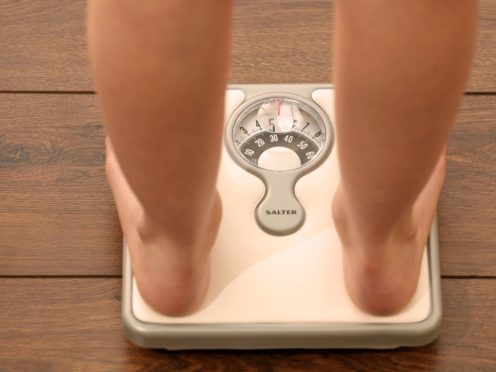Almost five million teenagers and adults across England, Scotland and Wales will be be morbidly obese by 2035, according to a new analysis.
The number of those aged 15 and older with a Body Mass Index (BMI) above 40 will more than double within 20 years, the projections show.
If current trends continue, there will be 4.99 million morbidly obese people in the three countries by 2035, up from 1.9 million in 2015, the researchers said.
More than one in 10 are predicted to be morbidly obese in Wales, while the highest levels will be seen among English men aged 55 to 64 years old.
The research, by the UK Heart Forum and Institute of Technology, Sligo, in Ireland, will be presented at the European Congress on Obesity in Vienna, Austria.
The authors said: “Our study reveals a worrying picture of rising morbid obesity across England, Wales and Scotland that is likely to weigh heavily on healthcare systems and economies.
“Strong measures to reverse this future trend must be an important public health priority.”
The study examined annual health data to try to predict how many people will be living with the most extreme forms of obesity in the future.
Morbid obesity is associated with significant health consequences, including a high risk of chronic diseases such as Type 2 diabetes, heart disease, stroke, mental illness and some cancers, the researchers said.
In 2015, 4% of adults in Scotland, 3% in England and 3% in Wales were classed as morbidly obese.
This will rise to 5% in Scotland, 8% in England and 11% in Wales by 2035, according to the analysis.
In England alone, this means 4,382,906 people are predicted to be morbidly obese, including 16% of men aged 55 to 64.
In Wales, 340,899 people are predicted to fall into this category, along with 268,650 in Scotland.
However, almost no 15-to-24-year-old males in Scotland are expected to fall within this category, compared to 6% of the same group in England, the data shows.
Laura Keaver, from the Centre for Research in Social Professions at the Institute of Technology, said this could be a sign of results from interventions to tackle obesity in Scotland.
“The Government put a massive push on developing a route map for how we can actually combat this,” she said.
“They put together resources from the NHS that were proving to be effective. They did put a lot of work into it.”
She also stressed the importance of monitoring changes in the number of people in each class of obesity.
“For a lot of people, moving them from obese to overweight maybe isn’t all that realistic, particularly in the short-term,” she said.
“Whereas, instead of deeming an intervention not effective, we could look at whether it has actually brought that person down the obesity spectrum.”
A BMI of above 25 means a person is classed as overweight and above 30 means they are obese.
There was insufficient data to examine trends in Ireland and Northern Ireland.
